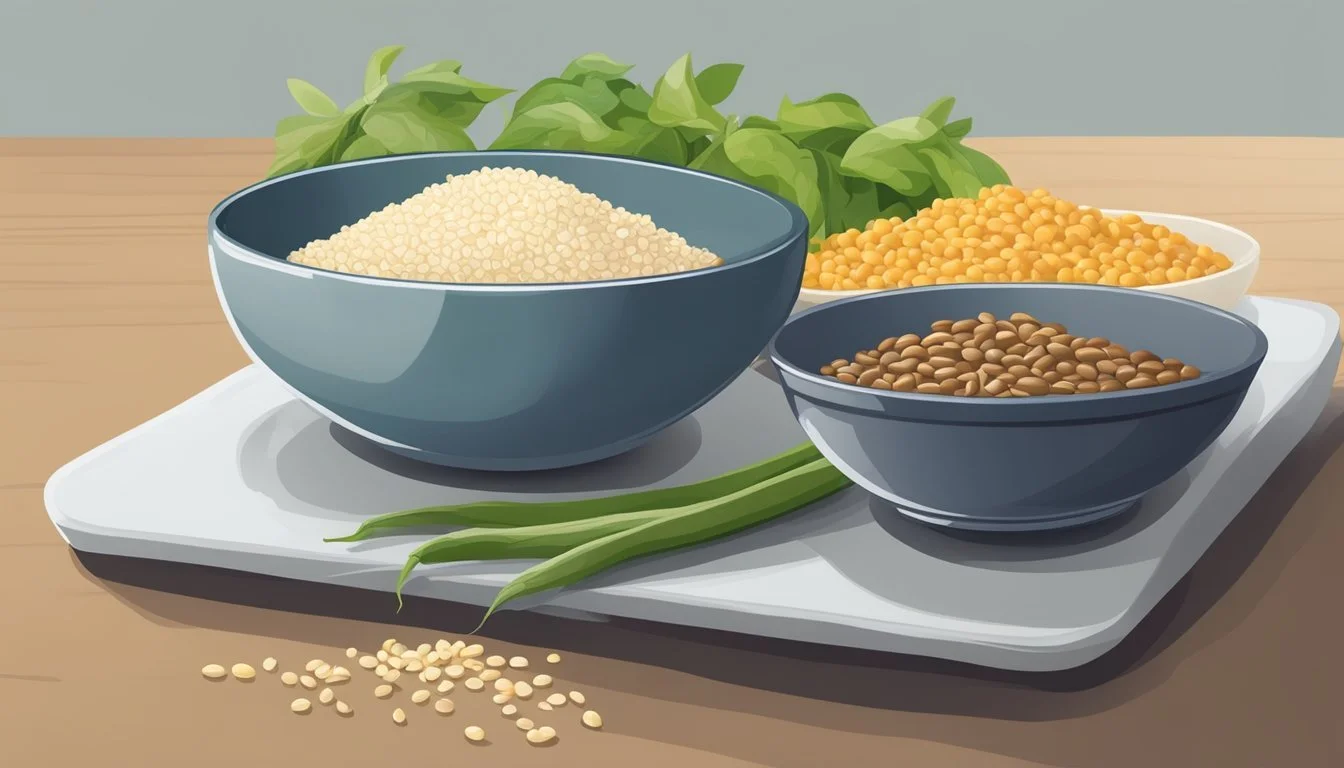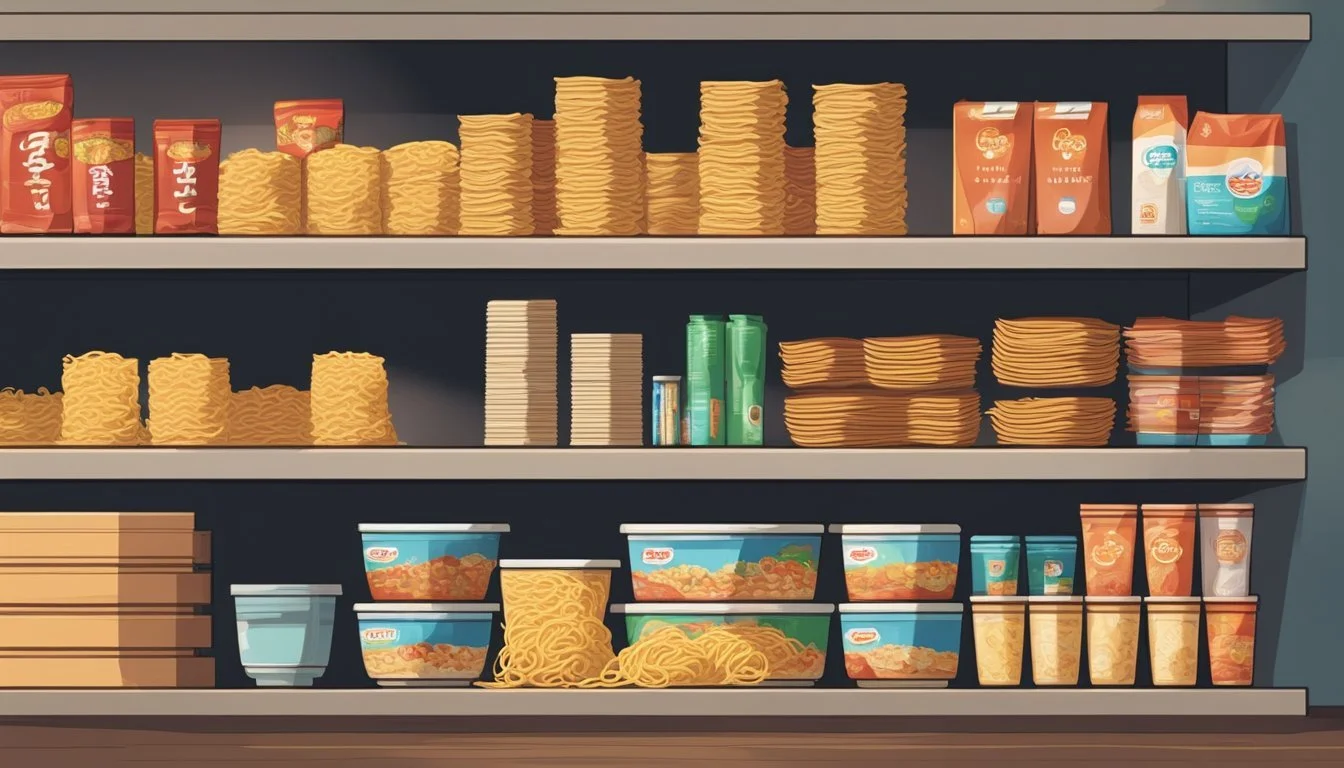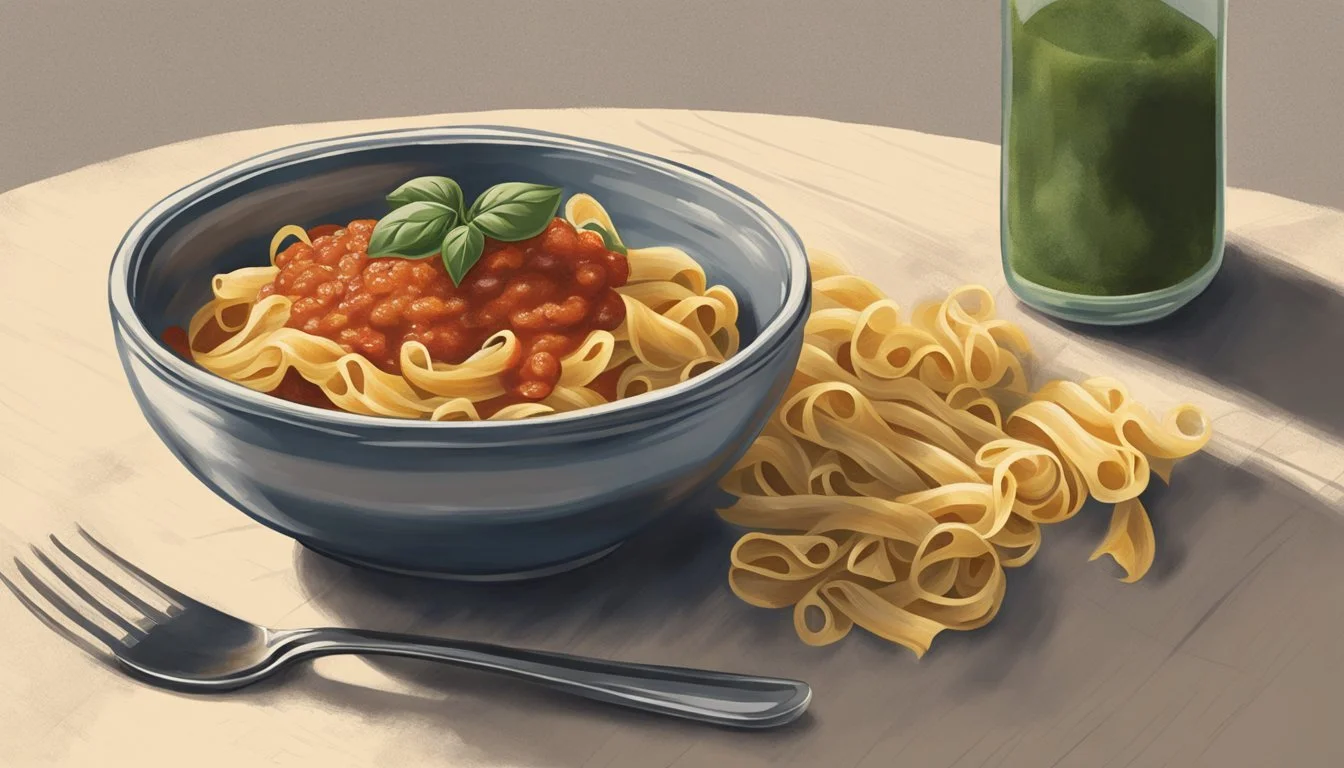Surviving on Scarce Resources: Nutritious Meals When Food is Limited
Finding oneself with limited food options at home can often feel daunting, but there are many creative solutions to this common dilemma. Utilizing basic pantry staples and a little imagination, anyone can whip up meals that are both satisfying and nutritious.
Simple ingredients like rice, beans, canned vegetables, and bread can serve as the foundation for various meal ideas. From classic combinations to more inventive concoctions, these essentials can transform into delicious dishes with minimal effort. By exploring versatile and easy-to-make recipes, one can confidently navigate those times when the fridge appears bare.
1) Peanut Butter and Jelly Sandwich
A peanut butter and jelly sandwich is an easy and nutritious option when food is scarce. Its simplicity and minimal ingredients make it a go-to meal.
Peanut butter provides protein and healthy fats, while jelly adds a touch of sweetness and some vitamins. Combined on slices of bread, this sandwich delivers a satisfying, balanced bite.
Bread options can vary based on what's available, including whole grain, white, or even toast. Each type adds a different texture and flavor profile.
Pairing the sandwich with items like apple slices or baby carrots enhances the meal with fresh, healthy sides. These additions are accessible and inexpensive, making them great complements.
Classic combinations like a peanut butter and jelly sandwich with a glass of milk, whether dairy or plant-based, offer extra nutrition and flavor harmony.
Another simple side to consider is popcorn, which adds a crunchy texture and can be seasoned to taste. Trail mix is also a great choice, adding both texture and extra nutrients through nuts and dried fruits.
This sandwich’s versatility and ease of preparation make it an ideal choice when options are limited.
2) Canned Soup
Canned soup is a convenient and versatile option when food supplies are low. It often requires minimal preparation and offers a variety of flavors to suit different tastes. Many canned soups are ready-to-eat, needing only to be heated up before consumption.
For those watching their sodium intake, there are low-sodium options available. According to dietitians, consuming less sodium is beneficial for heart health. Healthy Choice and Eat Proper Good brands, for example, offer low-sodium soups.
Canned soup can also be enhanced by adding other ingredients. For example, adding vegetables or leftover meats can boost the nutritional content. Beef stew can be paired with whole grain bread, offering a more balanced meal.
Plant-based options are available as well. Canned tomato basil soup made with coconut milk is low-carb and gluten-free, providing a nutritious choice for those with dietary restrictions.
While some canned soups do contain higher levels of sodium, these can still be a viable option in moderation. It's essential to read labels and select varieties that align with dietary needs.
Canned soup remains a practical solution for individuals needing quick, nutritious meals, especially when other food options are limited.
3) Instant Noodles
Instant noodles are a convenient and affordable choice when food options are limited. These non-perishable items can be found in many households and are known for their quick preparation time. With just a pot of boiling water or a microwave, a meal can be ready in minutes.
To enhance the nutritional value, consider adding vegetables like broccoli, carrots, or spinach. These additions provide essential vitamins and minerals that instant noodles lack. For protein, include eggs, leftover meat, or tofu. This not only makes the meal more filling but also more balanced.
Instant noodles often contain high sodium levels. Consuming them regularly can lead to health issues like high blood pressure. To mitigate this, use only half the seasoning packet or try low-sodium versions when available. Adding more water can also dilute the high sodium content.
Various flavors and types of instant noodles are available, including whole grain and whole wheat options. These healthier choices provide more fiber and nutrients than traditional refined flour noodles. Opting for these alternatives can make a significant difference in overall health.
Instant noodles are versatile and can be dressed up with simple ingredients. By making small modifications, they can serve as a more nutritious and satisfying meal option in times of need.
4) Frozen Vegetables
Frozen vegetables are an essential staple when food supplies are low. They offer convenience and nutritional value that can significantly support a diet. Many frozen vegetables retain most of their vitamins and minerals, making them a smart choice for maintaining a balanced diet.
Broccoli, cauliflower, and spinach are commonly found in freezers and are known for their health benefits. Broccoli, high in fiber, is also rich in cancer-fighting phytochemicals. Cauliflower can be used in a variety of dishes, from risotto to simple steamed sides, while spinach provides essential iron.
Frozen mixed vegetables can be a lifesaver. They can quickly be added to soups, stir-fries, or casseroles, making meal prep easier and faster. These mixes often include peas, carrots, and corn, offering a variety of textures and flavors.
Another great option is zucchini noodles. These can be used in place of traditional pasta to create a low-carb meal that is both satisfying and nutritious. They are easy to prepare and pair well with many sauces.
Frozen vegetables are also incredibly versatile. From enchiladas to vegetable soups, they can be a key ingredient in many budget-friendly recipes. Their long shelf life helps reduce food waste, offering a practical solution for those with limited access to fresh produce.
5) Rice and Beans
Rice and beans are staples in many cuisines around the world. They are affordable, shelf-stable, and highly nutritious. When combined, they provide a complete protein, supplying all essential amino acids needed by the body.
Both rice and beans are rich in fiber, which aids in digestion and keeps you feeling full longer. They also offer a good balance of carbohydrates and protein.
Black beans, in particular, add significant amounts of fiber and protein to meals. Rice, especially brown rice, provides additional nutrients like magnesium and manganese.
This combination is versatile and can be seasoned in various ways to suit different palates. Adding spices or vegetables can enhance the flavor and nutritional value of the dish.
For those with limited resources, rice and beans are economical choices that can be prepared in large quantities and stored for later use.
This meal can be adapted to fit dietary needs and preferences, making it a reliable option when food supplies are low.
6) Canned Tuna
Canned tuna is a versatile and nutritious food option that can be used in various dishes. It is rich in protein, providing about 22 grams per serving, and contains essential vitamins and minerals such as iron, selenium, and vitamin B12.
Preparing meals with canned tuna is quick and easy. For example, a tuna rice bowl can be made by mixing tuna with mayonnaise, Sriracha, rice wine vinegar, sesame oil, and soy sauce. Serve it over cooked rice with diced cucumber and strips of nori.
Another simple recipe is Tuna Macaroni and Cheese Cups. Preheat the oven to 350ºF and spray a muffin pan with non-stick spray. Cook 2 cups of macaroni, combine with shredded cheddar cheese and canned tuna, then bake in the muffin pan.
Canned tuna can also be used in sandwiches or salads. Mix it with some chopped celery, onions, and mayonnaise for a quick and tasty tuna salad. Serve it with bread, crackers, or over a bed of greens.
With its long shelf life, canned tuna is an excellent pantry staple. It can be transformed into a variety of meals, making it a perfect choice when food supplies are low.
7) Oatmeal
Oatmeal is a versatile and nutritious staple that can be prepared in various ways. It is made from oats, which are whole grains known for their high fiber content. This makes it a filling option that can keep hunger at bay.
A one-cup serving of cooked oatmeal contains essential vitamins and minerals. For example, it has significant amounts of vitamin B1 (thiamin) and manganese. These nutrients are crucial for energy metabolism and bone health.
Oatmeal is easy to make with minimal ingredients. Just add water or milk to dried oats and cook until they reach the desired consistency. Toppings such as fruits, nuts, or a drizzle of honey can enhance its flavor.
In situations where food is scarce, oatmeal's long shelf life and nutritional benefits make it a practical choice. It can be purchased in bulk and stored for extended periods without spoiling.
For individuals managing dietary restrictions, oatmeal is typically gluten-free and can be suitable for various dietary needs. It's also free of added sugars when prepared naturally, making it a healthy option for those monitoring their sugar intake.
Additionally, oatmeal is known for its potential health benefits, such as lowering cholesterol levels and supporting heart health. This makes it not only a convenient option but a nourishing one as well.
8) Pasta with Marinara Sauce
When pantry supplies are dwindling, pasta with marinara sauce is a simple, reliable option.
Pasta is versatile and pairs wonderfully with marinara sauce, a blend of tomatoes, garlic, and herbs.
To prepare, cook any type of pasta according to package instructions.
While the pasta is boiling, heat marinara sauce in a separate pot until warm and fragrant.
Once the pasta is done, drain it and combine with the sauce.
For added flavor, sprinkle some parmesan cheese or a dash of red pepper flakes if available.
Using basic, common ingredients, this dish is perfect for an easy, filling meal.
9) Eggs and Toast
Eggs and toast make a simple and nutritious meal when food options are limited.
Eggs are versatile, offering a good source of protein and essential nutrients like vitamin D and B12. They can be prepared in various ways, including boiled, scrambled, or fried, depending on your preference and what you have available.
Toast adds carbohydrates to your meal, which provide energy. Using white or whole grain bread can depend on your dietary requirements and what you have in stock.
Combining eggs and toast provides a balanced mix of protein and carbohydrates. You can also add a bit of butter or margarine to the toast for additional flavor and calories.
This meal is quick to prepare and can be made with minimal cooking equipment. Even with limited food supplies, eggs and toast can offer a satisfying and nourishing meal.
10) Frozen Pizza
Frozen pizza is a convenient meal option for those with limited food supplies. It offers a balance of carbohydrates, proteins, and fats. Most frozen pizzas include a base, tomato sauce, and cheese, making them a complete meal.
Adding extra toppings can improve the nutritional content. Frozen vegetables can increase vitamins and minerals. Cooking an egg on top of the pizza can boost the protein content, providing better satiety.
Some brands use healthier ingredients. For example, Banza offers a chickpea-based crust that has more fiber and protein than traditional crusts. This can be a better choice for those looking to increase their fiber intake.
It's important to note serving sizes. Many frozen pizzas are intended to be split into multiple servings. This can help control calorie intake and make the meal last longer.
In times of limited food, frozen pizza can be a practical and satisfying option. It requires minimal preparation and can be easily customized to improve nutrition.
Understanding Your Pantry
A well-organized pantry ensures meals can be prepared even when grocery supplies are limited. Focus on assessing available ingredients and categorizing food by shelf life to maximize resources effectively.
Assessing Available Ingredients
The first step is to take inventory of all the items in the pantry. List everything, from canned goods to dried foods and spices. Categorize the items into food groups such as grains, proteins, and vegetables. This helps identify what is available for balanced meals.
Checking expiration dates is crucial. Organize foods that will expire soon towards the front. Knowing what you have on hand can spur creativity and guide meal planning. For instance, cans of beans can be turned into soups, chilis, or even a simple side dish.
Think about versatile ingredients. Eggs, if available, can be a base for various meals like omelets or frittatas. Canned tomatoes can transform into sauces, soups, or stews. Even simple seasonings like salt, pepper, and garlic can elevate plain foods into more palatable meals.
Categorizing Food by Shelf Life
Categorize the pantry items by how long they will last. Separate foods into short-term (perishables), mid-term (semi-perishables), and long-term (non-perishables) groups.
Perishables, such as fresh vegetables, should be used first. Although limited in storage time, they are essential for nutritious meals. Semi-perishables, like certain grains and breads, come next. They typically last a few weeks to a few months.
Non-perishables are your pantry’s backbone. Items like rice, pasta, canned goods, and lentils can be stored for years and are versatile for a variety of recipes. Keeping these categories distinct helps in meal planning by priority, ensuring nothing goes to waste and meals remain varied.
Creative Cooking Techniques
Making meals when pantry supplies are minimal requires innovative combinations and straightforward methods. By being strategic with your ingredients and knowing simple ways to prepare them, you can create surprisingly delicious meals.
Combining Ingredients Wisely
When options are limited, combining ingredients thoughtfully ensures flavors and textures complement each other. Pair pantry staples like rice, pasta, or bread with whatever fresh or frozen items are available. For instance, rice bowls can feature varied toppings such as beans, leftover veggies, and even nuts.
Using canned goods creatively can also enhance meals. Canned chickpeas mixed with spices like turmeric and cumin can transform a basic meal. Don't underestimate the power of simple pairings like peanut butter and bananas on toast or hummus with kimchi for added zest.
Simple Cooking Methods
Simple cooking methods can make even scarce ingredients shine. Toasting is a quick way to transform plain bread into a satisfying meal with toppings like avocado or ricotta with olive oil. Another method is to prepare components in bulk, such as roasting vegetables, which you can then combine into different dishes throughout the week.
For versatility, boiling pasta with marinara sauce and adding frozen mozzarella achieves a homely meal in minutes. Additionally, consider using a broiler for quick and flavorful cheese toasts. The simplicity of these methods minimizes cooking time and maximizes flavor with minimal ingredients.







